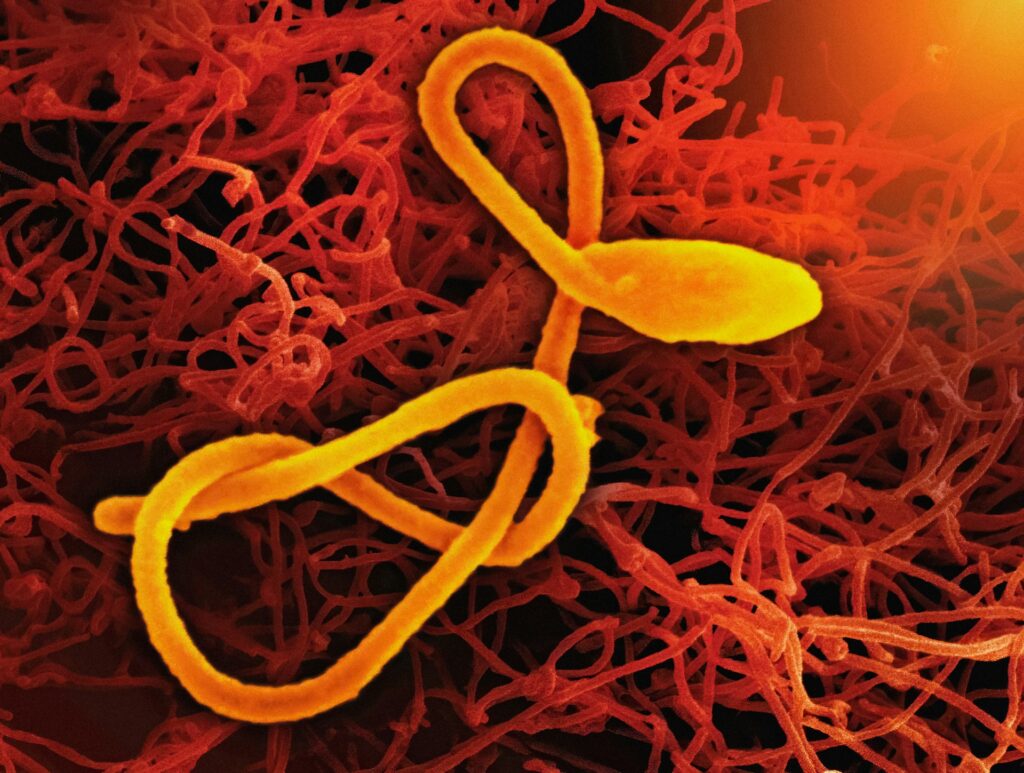Ebola virus disease (EVD), formerly known as Ebola hemorrhagic fever, is a severe, often fatal illness affecting humans and other primates. The disease was first discovered in 1976 near the Ebola River in what is now the Democratic Republic of Congo. Since then, sporadic outbreaks have occurred in several African countries, causing significant morbidity and mortality.
History of Ebola Virus
Discovery
The Ebola virus was first identified in 1976 during simultaneous outbreaks in Nzara, South Sudan, and Yambuku, Democratic Republic of Congo. The virus was named after the Ebola River, located near the initial outbreak site. Scientists discovered the virus in samples taken from infected individuals and subsequently classified it as a member of the Filoviridae virus family.
Outbreaks
Over the years, numerous outbreaks of Ebola virus disease have occurred primarily in Central and West Africa. These outbreaks have varied in scale, with some causing widespread devastation and others more contained. The most significant outbreak in recent history occurred between 2014 and 2016 in West Africa, predominantly affecting Guinea, Liberia, and Sierra Leone. This outbreak resulted in thousands of deaths and underscored the urgent need for effective control measures.
Causes and Transmission
Origin
The exact origin of the Ebola virus remains unclear, but evidence suggests that fruit bats are the likely natural reservoir. Humans can contract the virus through direct contact with infected animals or through the bodily fluids of infected individuals.
Modes of Transmission
Ebola virus is highly contagious and can spread rapidly within communities. The virus is primarily transmitted through close contact with blood, secretions, organs, or other bodily fluids of infected people. Healthcare workers and family members caring for sick individuals are at particularly high risk of contracting the disease.
Symptoms and Diagnosis
Early Symptoms
The onset of Ebola virus disease is typically abrupt, with symptoms appearing suddenly and worsening rapidly. Early signs may include fever, severe headache, muscle pain, fatigue, and gastrointestinal symptoms such as vomiting and diarrhea. As the disease progresses, patients may develop more severe complications, including internal and external bleeding.
Diagnostic Procedures
Diagnosing Ebola virus disease can be challenging due to its nonspecific initial symptoms and the need for specialized laboratory testing. Healthcare providers typically use a combination of clinical evaluation, patient history, and laboratory tests to confirm a diagnosis. Rapid diagnostic tests have been developed to expedite the identification of Ebola virus in affected individuals.
Treatment and Prevention
Current Treatments
There is currently no specific antiviral treatment available for Ebola virus disease. Supportive care, including hydration, pain management, and treatment of complications, remains the primary approach to managing the illness. Experimental therapies, such as monoclonal antibodies and antiviral drugs, are being investigated for their potential effectiveness in treating EVD.
Preventive Measures
Preventing the spread of Ebola virus disease relies on implementing strict infection control measures and promoting public health interventions. These measures include isolation of infected individuals, contact tracing, safe burial practices, and the use of personal protective equipment by healthcare workers. Vaccines have also been developed and deployed in outbreak settings to help control transmission.
Impact on Public Health
Global Concerns
Ebola virus disease poses significant challenges to public health systems and global health security. Outbreaks can strain healthcare infrastructure, disrupt social and economic stability, and pose risks to international travel and trade. Rapid detection and response are essential for containing outbreaks and preventing further transmission.
Economic Impact
The economic impact of Ebola virus disease extends beyond the immediate healthcare costs associated with treating affected individuals. Outbreaks can have long-lasting effects on local economies, including disruptions to agriculture, trade, and tourism. The indirect costs of lost productivity and reduced investment can exacerbate the economic burden on affected communities.
Recent Developments
Research Advances
Advances in scientific research have led to a better understanding of the Ebola virus and its pathogenesis. Researchers continue to study the virus’s genetic makeup, transmission dynamics, and host immune responses to identify potential targets for therapeutic intervention.
Vaccine Development
The development of vaccines against Ebola virus disease represents a significant milestone in disease prevention. Several candidate vaccines have been developed and tested in clinical trials, demonstrating varying degrees of efficacy in protecting against infection. The widespread deployment of these vaccines in outbreak settings has helped to contain transmission and reduce the impact of EVD on affected populations.
Outlook and Future Directions
Challenges
Despite progress in understanding and controlling Ebola virus disease, significant challenges remain. These include ongoing surveillance and preparedness efforts, ensuring equitable access to vaccines and treatments, and addressing social and cultural factors that may influence disease transmission.
Potential Solutions
Addressing the complex challenges posed by Ebola virus disease requires a multifaceted approach involving collaboration between governments, international organizations, research institutions, and affected communities. Investing in healthcare infrastructure, strengthening surveillance systems, and promoting community engagement are critical components of efforts to prevent future outbreaks and mitigate the impact of EVD.
Conclusion
Ebola virus disease continues to pose a significant threat to global health security, with the potential for devastating outbreaks in vulnerable communities. However, advances in research, surveillance, and vaccine development offer hope for better prevention and control of the disease in the future. By addressing the underlying factors contributing to disease transmission and building resilient health systems, we can work towards a world where Ebola virus disease no longer poses a widespread public health threat.

